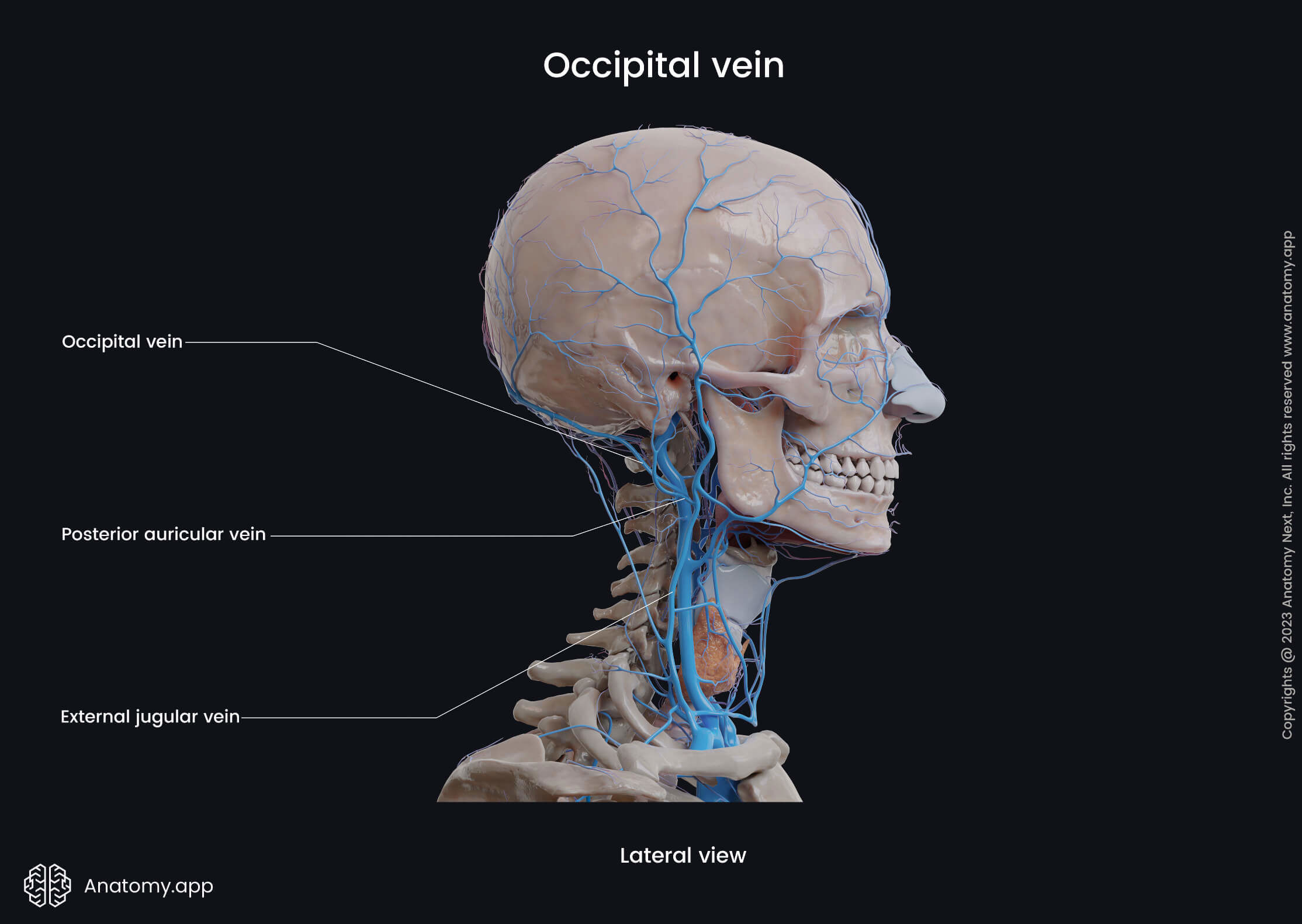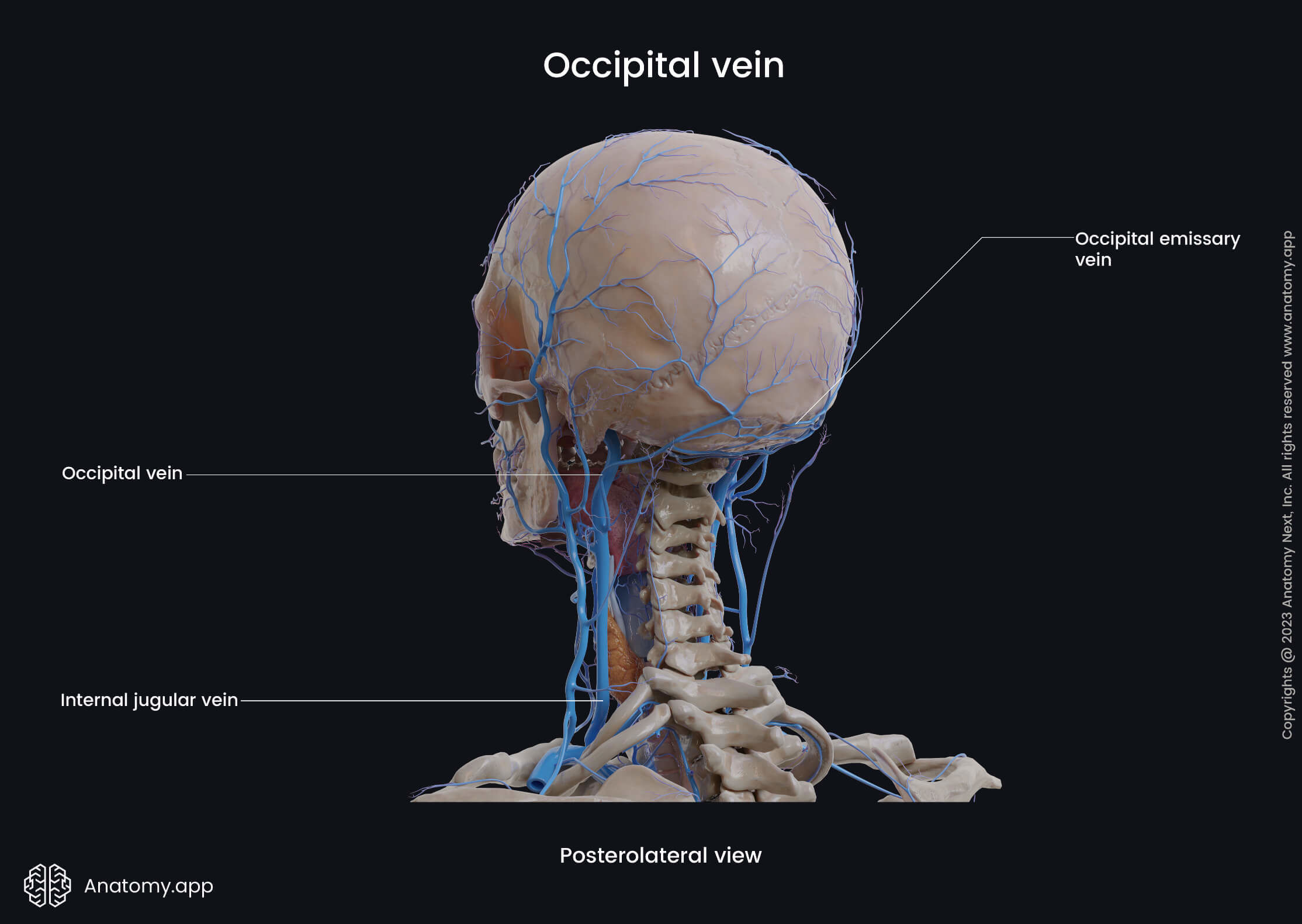- Anatomical terminology
- Skeletal system
- Joints
- Muscles
- Heart
- Blood vessels
- Blood vessels of systemic circulation
- Aorta
- Blood vessels of head and neck
- Arteries of head and neck
- Veins of head and neck
- Veins of head
- Extracranial veins
- Intracranial veins
- Veins of neck
- Veins of head
- Blood vessels of upper limb
- Blood vessels of thorax
- Blood vessels of abdomen
- Blood vessels of pelvis and lower limb
- Blood vessels of systemic circulation
- Lymphatic system
- Nervous system
- Respiratory system
- Digestive system
- Urinary system
- Female reproductive system
- Male reproductive system
- Endocrine glands
- Eye
- Ear
Occipital vein
The occipital vein (Latin: vena occipitalis) is a blood vessel that arises from the posterior venous plexus in the scalp. It collects venous blood from the occipital region of the head.
The occipital vein penetrates the cranial attachment of the trapezius muscle and dips into the suboccipital triangle, where it joins the deep cervical and vertebral veins. The occipital vein drains into either of the following veins:

The main tributaries of the occipital vein are the occipital emissary veins that connect the occipital vein with the intracranial confluence of sinuses. This connection happens via the mastoid and parietal foramina and the posterior condylar canal.
